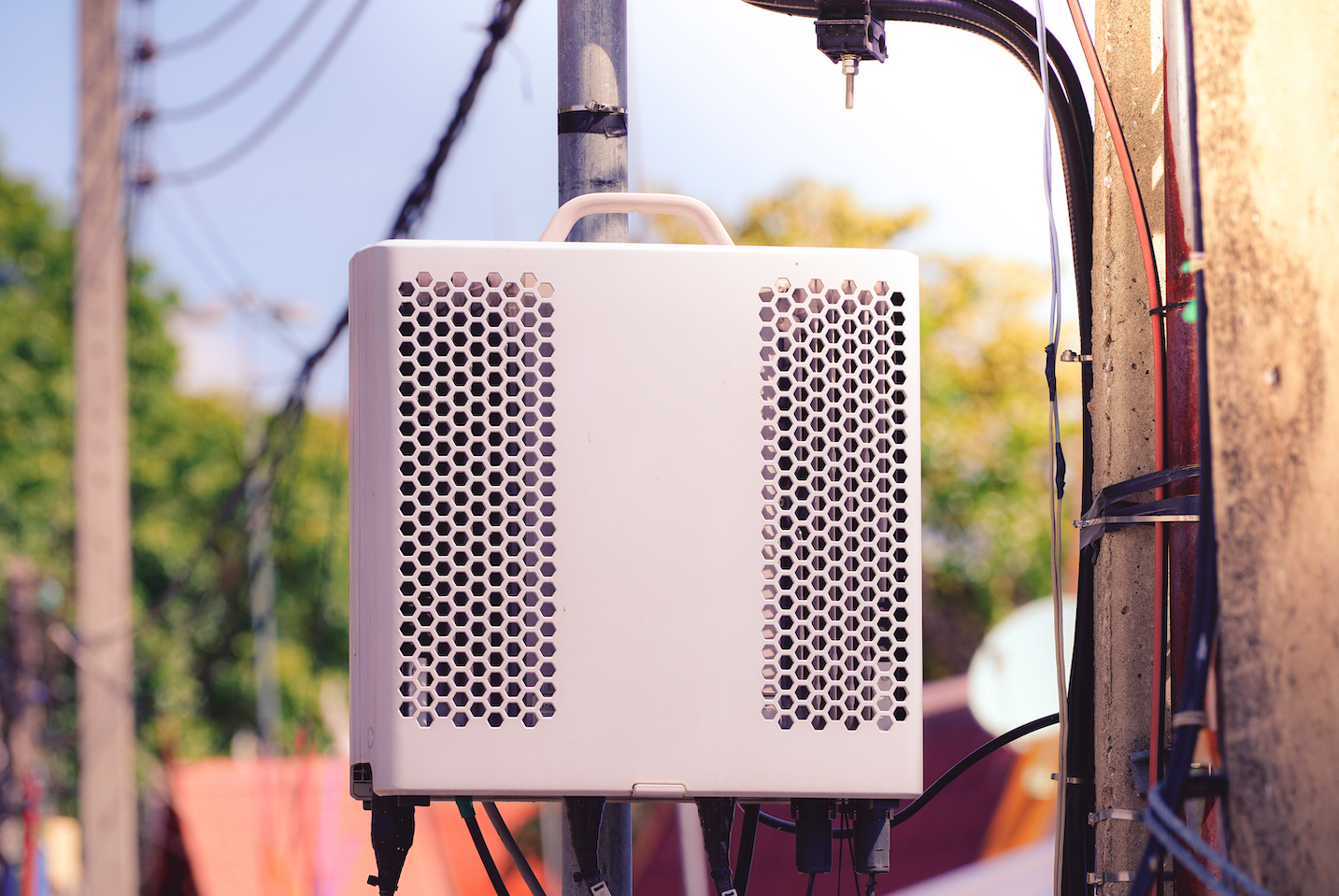5G systems need to be as unobtrusive as past cellular technologies
Consumers and businesses are generally excited about 5G systems. They like the promises of faster data transmission, additional connected devices, and smart cities. However, consumers are also interested in preserving the appearance of their cities. This has caused contention, municipal restrictions, and even vandalism towards 5G systems.
5G systems require many, many small cell sites across urban areas to provide expected/required speeds. Without these widespread deployments, 5G systems are simply unworkable. The telecoms industry has responded to these concerns by shrinking the size of cellular systems. They have also made these new systems more aesthetically pleasing, ensuring they blend into their surroundings well.
These smaller systems have a critical problem: heat. 5G technologies already generate significantly more heat than legacy cellular systems, mostly because it takes more computer overhead to run a 5G cell site. The smaller, more dense electronics inside these new cells also emit more heat than larger 5G cells. The result is a lot of heat in a very small package.
These small cell sites must be kept cool. Even a small 10ºC rise in chip temperature can cut their average lifespan by 50%! Across the many thousands of cell sites in a 5G network, letting the chips run hot would cost thousands of dollars a year in additional equipment replacement. Other solutions, like high-RPM fans, generate a high-pitched whining noise that is piercing to most people’s ears. How can a telecom operator address these issues?

Passive cooling gets rid of heat without the noise
If traditional active fan cooling isn’t practical due to public concerns, then the entire cooling system needs to be redesigned to use, passive cooling technologies. A passive system radiates heat into the outside environment without any moving parts. These include heat sinks, heat pipes, and vapor chambers. These technologies can move heat away from heat sources like chips to the outside environment, silently.
What’s more, passive technologies can significantly reduce maintenance costs compared to active ones. Fan motors can burn out or require lubrication. Passive solutions, short of physical damage, basically have no failure modes. Consider a machined aluminum heatsink: unless it’s broken off, it will function indefinitely.
These passive technologies can also be augmented with a scaled-down active cooling unit. Instead of a large fan, a passive system can use a much smaller (and quieter!) fan to accomplish the same cooling. A well-designed passive cooling system, in certain circumstances, can even be completely silent.
Passive cooling is significantly more complex than simple fans
Active cooling with fans is a simple and tried-and-true solution. Passive cooling systems are significantly more complicated than this.
Passive coolers have to be precisely engineered to fit the circuit boards they’re cooling. There are extremely precise physical tolerances to ensure all the parts fit together. This includes the circuit board, the cooling system, and even tiny things like screws. Both engineering the system and manufacturing it in exactly the right way can be difficult and expensive.
Circuit designers can also get stuck in traditional design thinking. In the past, the circuit board was designed and made functional, then engineers worried about cooling. For passive systems, it is best and most effective to design the cooling system at the same time as the circuit layout.
Design passive cooling at the same time as your 5G circuits
Doing the design of both electronics and cooling at the same time can maximize the effectiveness of both systems. This is quickly becoming a best practice in the electronics design industry.
Because electronics engineering firms generally don’t have the necessary skills to engineer a good thermal solution, many have turned to a trusted industry partner. At Delta Electronics, we have been working with industry leaders to design effective cooling solutions for their new small 5G cell sites.
Our experts, working with equipment vendors, often recommend design changes to improve thermal performance. Those changes include redesigning circuits to improve airflow (reducing fan noise), reducing the number of fans with passive cooling, and making fans more reliable to reduce maintenance calls.
Thermal load will be an increasing problem in small 5G cell sites. Given consumer demands are unlikely to change, the only viable solution is to ensure good thermal design before the cell site is installed. This way, everyone can keep their head cool.



